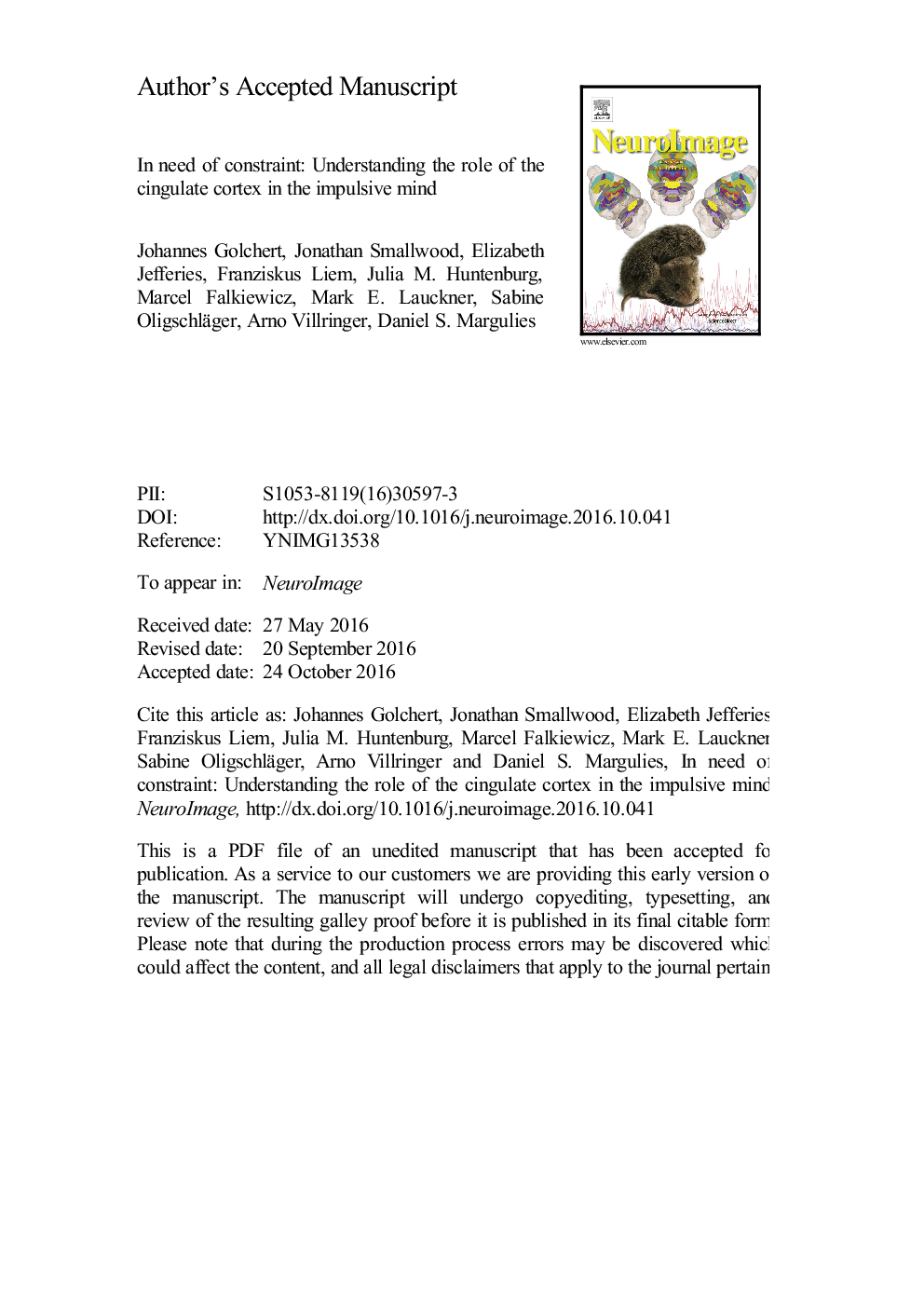ترجمه فارسی عنوان مقاله
نیاز به محدودیت: درک نقش قشر ساقه در ذهن تحریک پذیر
عنوان انگلیسی
In need of constraint: Understanding the role of the cingulate cortex in the impulsive mind
| کد مقاله | سال انتشار | تعداد صفحات مقاله انگلیسی |
|---|---|---|
| 153337 | 2017 | 38 صفحه PDF |
منبع

Publisher : Elsevier - Science Direct (الزویر - ساینس دایرکت)
Journal : NeuroImage, Volume 146, 1 February 2017, Pages 804-813

